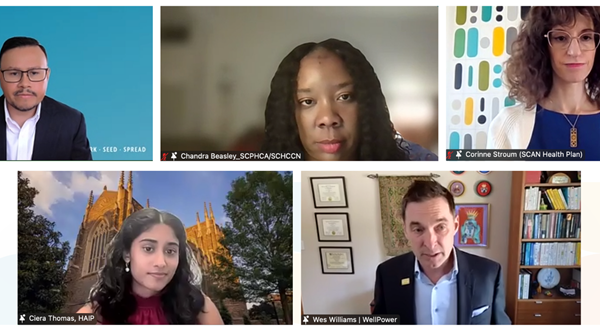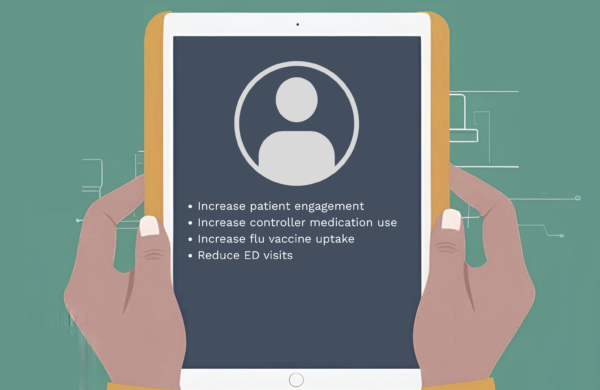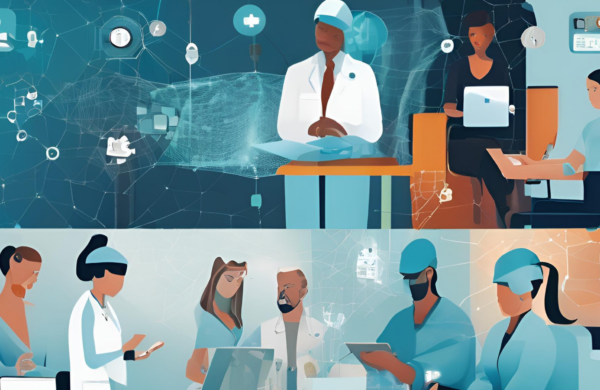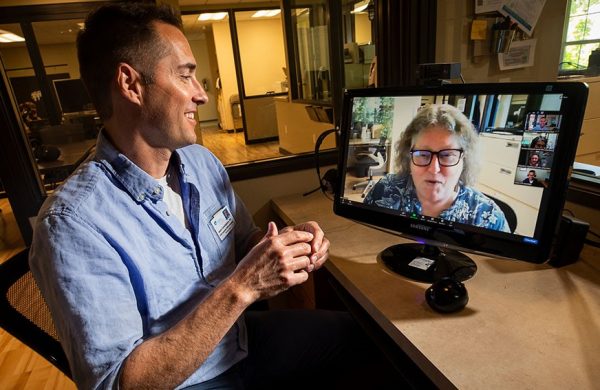AI solutions are changing health care, and safety net organizations must be prepared to navigate the opportunities and risks. Navigating the AI Landscape for the Safety Net brought together thought leaders and early adopters to explore how safety net organizations can approach AI with intention, collaboration, and care. Learn how to approach the rapidly changing environment of AI solutions, get access to curated resources, and hear from your community of fellow leaders shaping the future of AI.
Recording and slide deck
https://vimeo.com/1081692943Tools and resources
- Explore the deck: - About the partnership — Center for Care Innovations, Health AI Partnership, and Alliance Chicago - Framing the current moment in AI for the safety net - Health Equity Across the AI Lifecycle (HEAAL) — framework for assessing and mitigating AI-driven health disparities
- T️hese AI vendor listing services are free for use by safety net providers, and are complete with a comprehensive list of the solutions, feedback, and reviews: - AVIA Marketplace - Elion
- 11 Takeaways on Navigating Trust and Health Equity in the Era of AI - How might we drive inclusive innovation? Review key lessons learned from the recent Safety Net Innovation Summit that explored how AI can be harnessed to advance health equity, with an emphasis on building trust within the health care safety net.
- Empowering US healthcare delivery organizations: Cultivating a community of practice to harness AI and advance health equity
- The urgency of centering safety-net organizations in AI governance - Highlighting the critical need to include safety-net organizations in the development and governance of AI to ensure that emerging technologies promote health equity rather than deepen existing disparities.
- Fairlearn - Open-source, community-driven toolkit to help data scientists assess and improve fairness of AI systems
PANEL DISCUSSION
AI in the Safety Net — Opportunities, Challenges, and the Path Forward AI is rapidly evolving and holds promise for reducing administrative burdens, supporting frontline workers, and improving care. However, adoption in the safety net comes with unique challenges. While administrative AI is often seen as lower risk than clinical AI, it still carries potential risks that must be understood. We invited thought leaders in the community to share insights into real-world experiences and practical steps that organizations can take to harness AI effectively, while also considering its risks and unintended consequences:- Chandra Beasley | Director of Information Technology, South Carolina Primary Health Care Association / South Carolina Health Center Controlled Network
- Corinne Stroum | Head of Emerging Technologies, SCAN
- Ciera Thomas | Research and Product Manager, Duke Institute for Health Innovation
- Wes Williams | VP & Chief Information Officer, WellPower
Key Takeaways

Chandra Beasley (SCPHCA / SCHCCN) shared real-world examples of how her network is using AI to uncover and act on inequities - like identifying which SDOH factors most impact care quality and risk. Her team piloted AI analytics and is exploring natural language processing (NLP) tools to improve communication with patients with limited English proficiency or low health literacy.
- AI for equity-driven analytics: Developed a Quality Risk Model that stratifies patients based on quality scores and SDOH data to prioritize equity-focused interventions.
- Translation + NLP tools: Using AI to help bridge communication gaps and improve access for patients with limited English proficiency or low health literacy.
- No-show forecasting: Exploring predictive models to optimize appointment scheduling and reduce missed visits.
- Equity-first implementation: Shared a step-by-step approach that includes patient input, bias-aware vendor vetting, local data validation, transparent staff training, plain-language patient consent, and equity monitoring.
- Transparency and trust: Highlighted the importance of explainable AI that clinicians can rely on and patients can understand.
Corinne Stroum (SCAN) emphasized rigorous AI governance and testing from the outset—especially when serving vulnerable populations. Corinne noted her team exploration's into how generative AI can produce more realistic, human-sounding voice messages to build trust and improve engagement with harder-to-reach seniors.
- AI for equitable communication: Exploring natural-sounding voice translations in patients’ preferred languages - helping reduce reliance on third-party interpreters and improve trust through more authentic, human-like messaging.
- Internal readiness: Called for organization-wide AI literacy through training and cross-department collaboration.
- Insourcing AI capacity: Encouraged organizations to repurpose existing staff (e.g., IT, compliance, HR, legal, security) into cross-functional AI workgroups. Emphasized that most organizations don’t need a dedicated AI team - they need to upskill people already familiar with tech acquisition and risk management.
- Embedded governance: Advocated for equity and risk assessments at the very beginning of AI projects, not as an afterthought.
- Bias testing: Recommended fairness audits and counterfactual testing to ensure tools perform equitably across diverse populations.
Ciera Thomas (Duke Institute for Health Innovation) discussed lessons from the Health AI Partnership (HAIP) Practice Network, which supports safety-net organizations in adopting AI. Ciera stressed thoughtful implementation, community participation, and aligning AI tools to real challenges.
- Use cases in practice: AI for diabetic retinopathy screening, no-show prediction, and AI scribes.
- Intentionality first: Emphasized that AI must be used where appropriate, not just where it's new — "Start with a clear understanding of why you want to use the tool, and why it’s the right tool for you…That [then] becomes a guiding light through the whole process.”
- Readiness framework: Called for clear success metrics and understanding of how AI integrates with workflows.
- Peer learning as infrastructure: Highlighted the importance of mentorship, shared office hours, and community expertise to fill technical gaps.
- Resource-sharing over reinvention: Emphasized the value of collaborative networks, mentorship, and peer learning to help safety net organizations adopt AI without needing to build everything from scratch.
Wes Williams (WellPower) described WellPower’s rollout of AI-assisted documentation, highlighting both measurable impact and ethical implementation. Wes' team piloted generative AI for clinical notes - without storing session recordings - thanks to a redesign from their vendor that allowed secure real-time audio processing.
- Thoughtful rollout: Led a 5-month pilot of generative AI scribes with intentional input from legal and compliance teams. This cross-functional collaboration helped address privacy concerns early and build clinician trust before broader implementation.
- Strategic vendor alignment: Highlighted the importance of choosing early vendors wisely, but also staying alert as EHR platforms begin offering native AI capabilities, which could simplify integration and long-term maintenance.
- Surprising ROI: Noted that AI scribes, originally adopted to reduce documentation burden, also led to unexpected gains in productivity and relative value units (RVUs) - ultimately delivering a 14x return on investment and strengthening the case for broader adoption.
- Context matters: Stressed that AI must be designed with diverse, resource-constrained settings in mind—not just for large, well-funded systems.
- What can we do to advance health equity for the safety net? "Speaking from a single provider - be present. Be part of this. Use the solutions. Be an active voice as customers because just by being here, using it, and sharing what we learn, we help advance health equity."
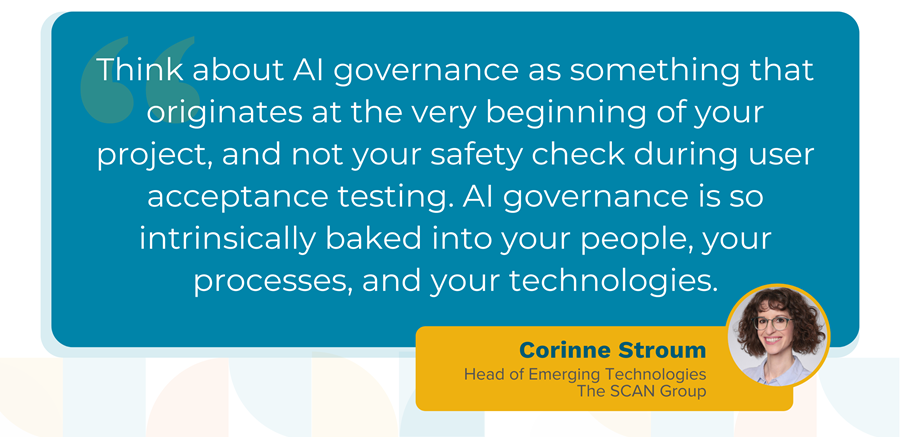
Stay Involved with The community
Navigating the AI Landscape for the Safety Net is a collaboration of the Center for Care Innovations, Health AI Partnership, and Alliance Chicago. Our commitment is to grow this community of safety net providers who continuously learn from each other via email updates, AI in Action monthly webinars, and opportunities for collaboration such as the Safety Net Innovation Summit this October 2025. We aim to build resources with practical tools and experiences to guide safe and equitable adoption of AI solutions. We'll explore how to ensure shared infrastructure and services for safe and equitable use of AI solutions across the health care safety net. As we move forward, we invite and encourage you to:- Help refine our action agenda by actively participating in events and providing ongoing input and feedback.
- Share resources as well as experience for common benefit.
- Support funding efforts for common good.

